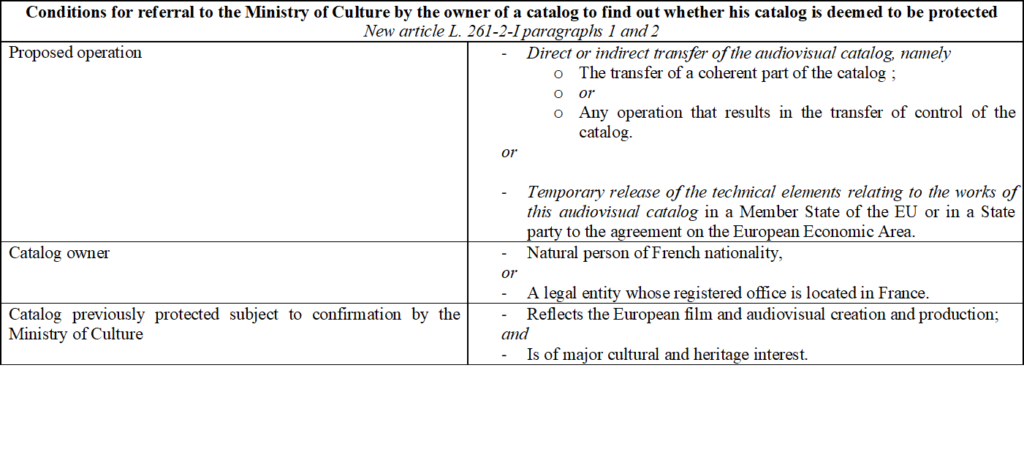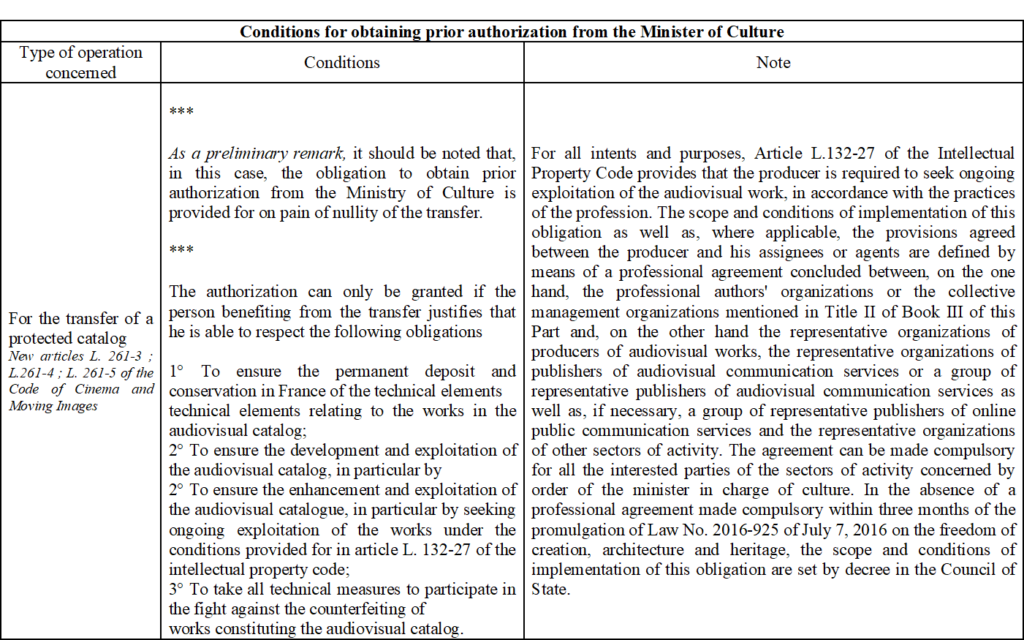EXCLUSIVE DISCUSSION: the Ministry of Culture’s project to control the sale of audiovisual catalogs
Contexte has obtained and published the “draft bill” on the protection of public access to cultural works in the digital age. UGGC delivers its legal expert commentary in preview.
Among the 21 articles that make up the bill, we find the provisions of the bill reforming the audiovisual sector, presented in March 2020, but in addition to Article 17, a novelty that aims to protect French audiovisual catalogs and that Anne-Marie Pecoraro – associate lawyer specializing in intellectual property law at UGGC Avocats – proposes to decipher.
As a preliminary point, according to the draft bill, an audiovisual catalog refers to a set of cinematographic and audiovisual works. It is composed, on the one hand, of the property rights relating to each of these works, and on the other hand, of the technical elements necessary for their fixation[1].
Generally speaking, according to the draft bill, in order to know whether prior authorization is required for the transfer or temporary release of technical elements of an audiovisual catalog (II), the owner of the catalog will have to refer to the Minister of Culture so that he can establish whether the catalog in question is deemed to be protected or not (I). Failure to comply with this obligation would result in significant penalties (III).
I. With regard to audiovisual catalogs deemed to be protected
According to the draft bill, no audiovisual catalog is protected per se.
The qualification of a protected audiovisual catalog is in fact the responsibility of the Ministry of Culture, which must be consulted beforehand, i.e., before any request for authorization for the transfer or temporary release of technical elements of an audiovisual catalog, by the owner of the said catalog under the conditions set out in the table :

After a written request from the owner of the audiovisual catalog concerned and in the absence of a response within two (2) months, the catalog is deemed not to be protected and prior authorization for the transfer or temporary release of the technical elements is not required.
On the other hand, if the catalog is deemed to be protected, prior authorization from the Minister of Culture remains an obligation.
II. Conditions for obtaining prior authorization from the Minister of Culture
These conditions vary according to the type of operation concerned.

III. With regard to sanctions
Firstly, if the transfer of a protected audiovisual catalog has been made without prior authorization, the Minister of Culture may order the person concerned to file an application for authorization and, pending his decision, to restore the previous situation at his own expense. The injunction may be accompanied by a fine, the amount and date of effect of which are specified.
Secondly, if the Minister considers that the integrity, preservation or continuity of the exploitation of an audiovisual catalog would be compromised or likely to be compromised, the Minister may take the following protective measures
i. Temporarily suspend, restrict or prohibit the free availability of all or part of the audiovisual catalog;
ii. Appoint an agent to ensure the protection of the audiovisual catalog, who can block any decision that could affect it.
Furthermore, even after the authorization for assignment has been issued, the Minister of Culture could, if he considers that one or more of the obligations of the beneficiary of the assignment are not respected :
i. Withdraw the authorization ;
ii. Enjoin the beneficiary to comply with the obligation(s) concerned within a period of time that he shall determine. The injunction may be accompanied by a penalty payment, the amount and effective date of which it shall specify;
iii. Take the necessary precautionary measures.
Financial penalties are also provided for.
In the event of unauthorized transfer or temporary departure, they may amount to a maximum of:
i. Double the amount of the transfer price of the audiovisual catalog or the amount of the operation;
ii. When the person concerned is a company, 10% of its annual worldwide turnover before tax;
iii. One million euros for legal entities and five hundred thousand euros for natural persons.
For the time being, it is advisable to remain cautious insofar as this is a preliminary draft law: as a result, nothing is yet set in stone. In our opinion, further details are expected on the possibilities of appeal in case of refusal by the Conseil d’Etat to grant a prior authorization to the transfer and also on the conformity of such a system, in particular with European Union law.
Subject to these reservations, it should be noted that the draft bill should be presented to the Council of Ministers at the beginning of April and examined by Parliament before the summer.
Sources : Contexte et Les Echos
[1] According to the new article L. 261-1 of the Code du cinéma et de l’image animée, the elements taken into account vary according to the type of work :
- For works fixed on a photochemical support :
- Image negative films;
- Sound negative films and magnetic sound carriers;
- Intermediate elements allowing the obtaining of positive copies;
- Positive copies when these are the only existing technical elements.
- For works fixed on a digital support:
- Source digital files.